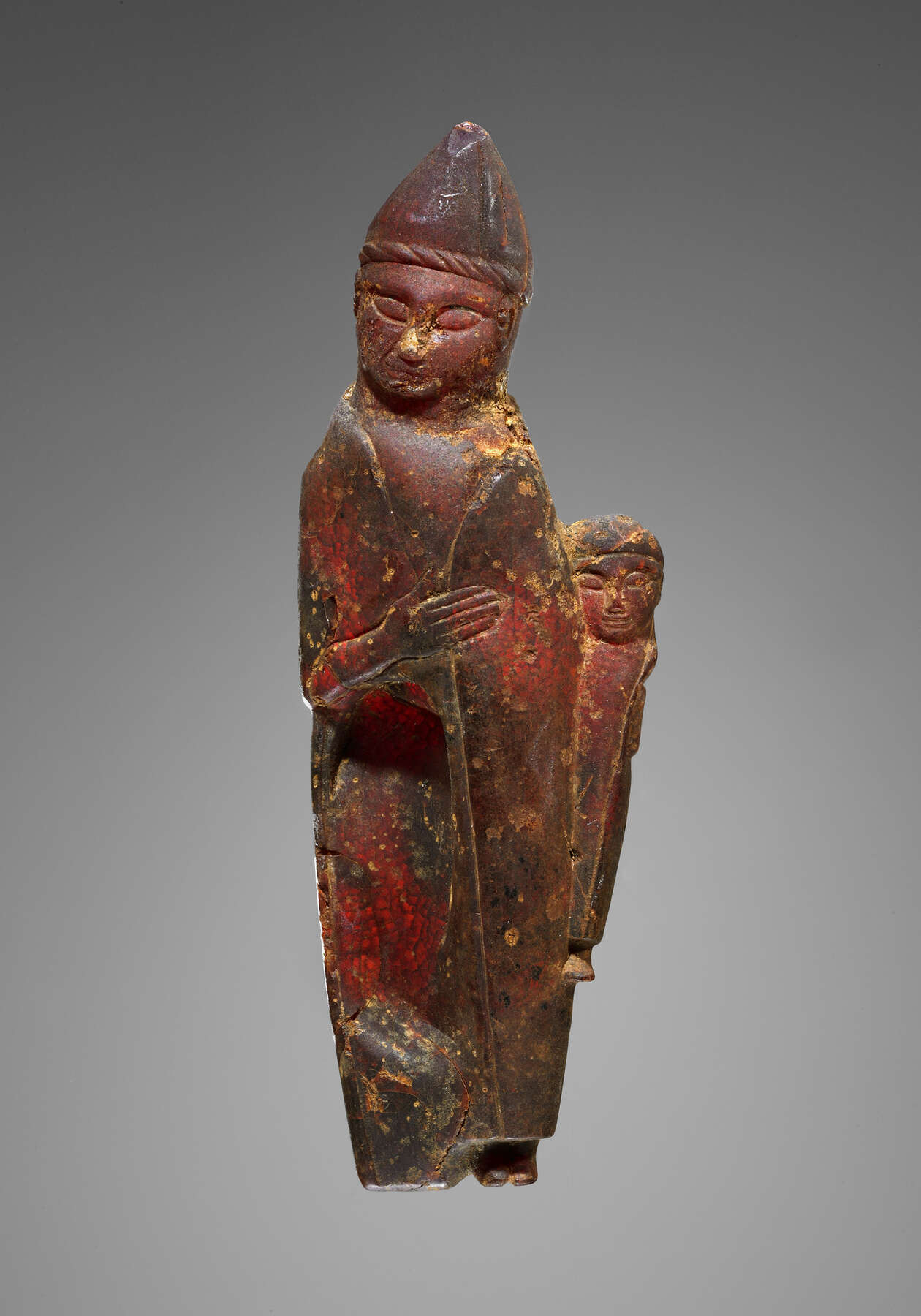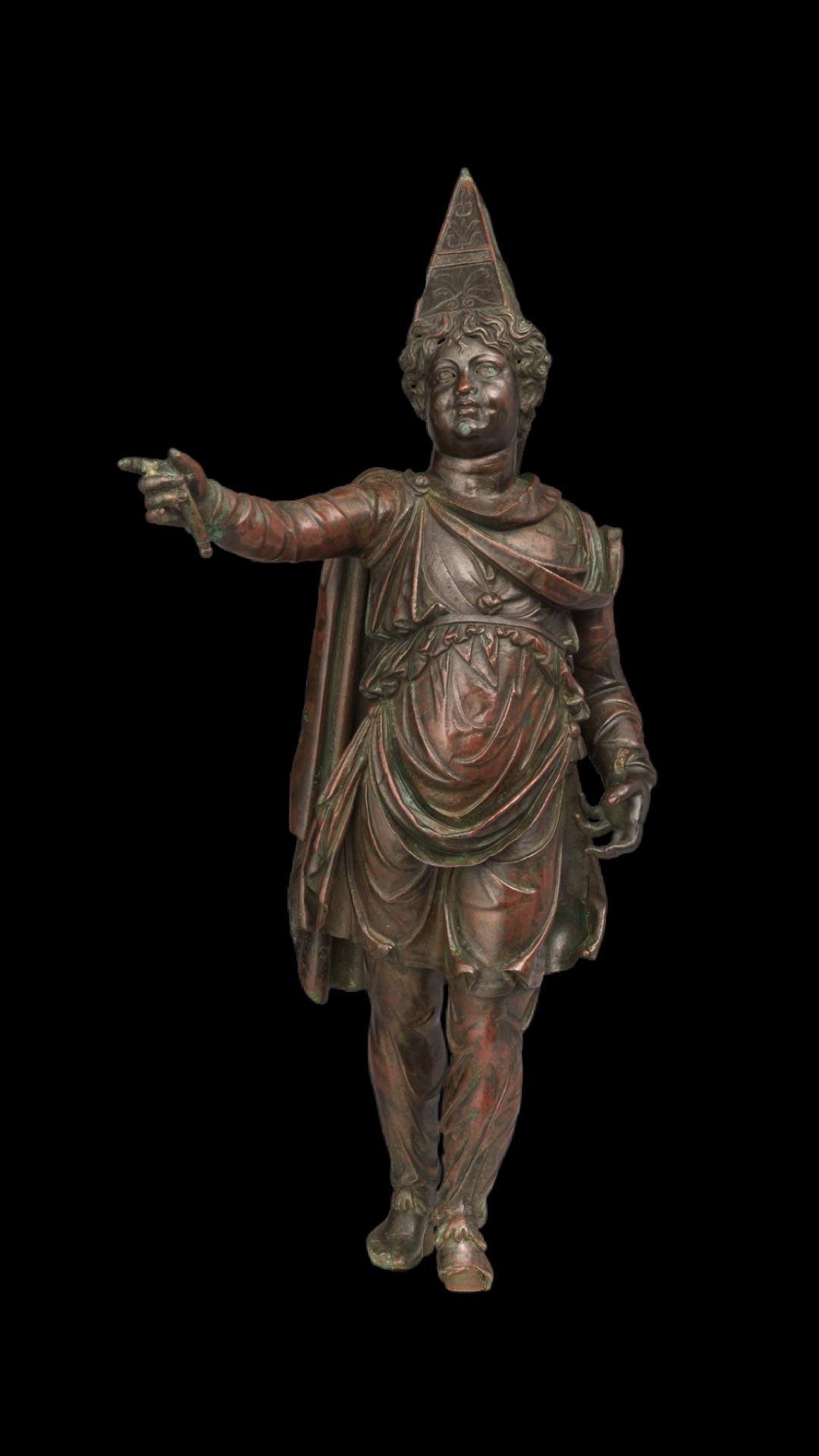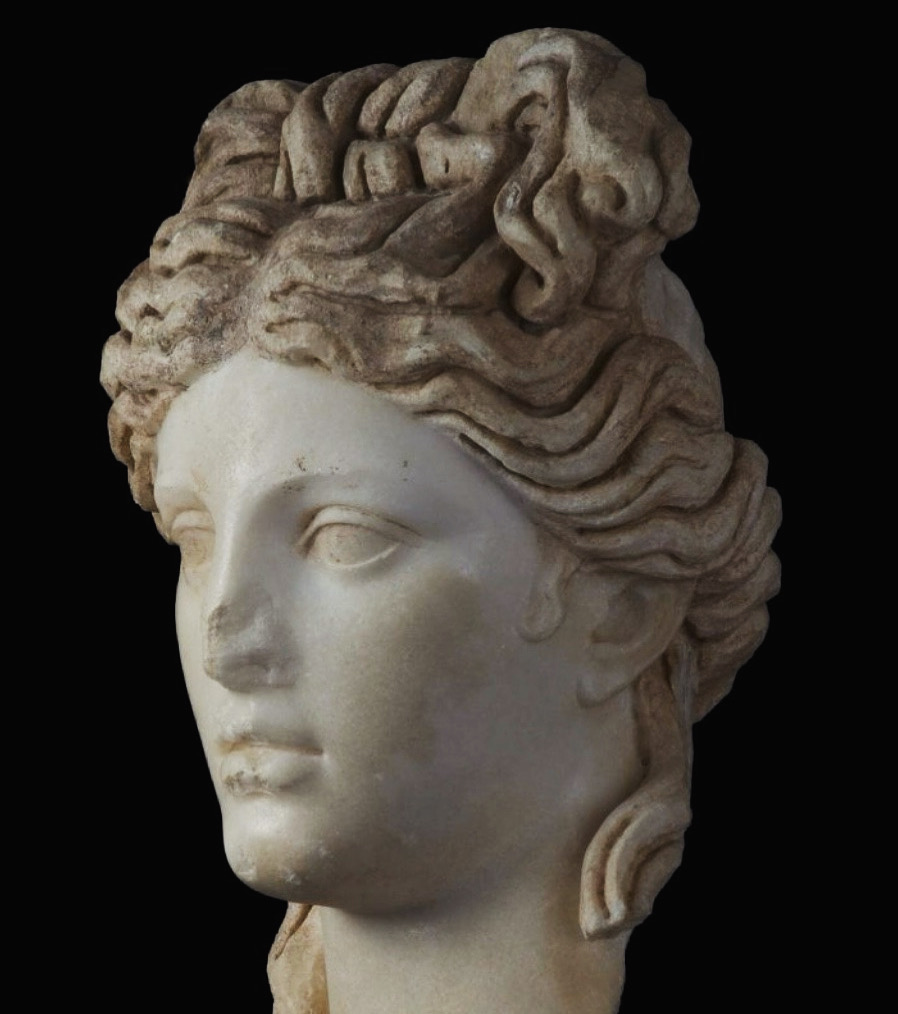Prized for its luminous, warm glow, amber was something special in the ancient world. Rather than the flinty shine of polished gems, it appeared lit from within.
What exactly amber was and where it came from was the subject of considerable consternation in the ancient world, ranging from fanciful (e.g. the tears of Apollo) to prosaic (e.g. special pine sap hardened in the northern seas), to downright bizarre (hardened lynx’s urine, anyone?).

Elektron was the most common name in Ancient Greece for amber, and almost certainly related to the word in the Iliad meaning “the beaming sun” (elektor). The Romans were impressed by the fiery gleam of the substance, and its gentle glow.
Amber was especially prized as protective, both broadly and in times of acute danger (such as childbirth, illness, or perilous journeys) and worn on the body to repel danger. That must certainly have been the case for these two Etruscan stunners at the Getty. The first is an elaborately cloaked woman wearing a peaked cap and holding a small swaddled child to one side. The second is a stylised ship with three heads peering off one side.
Small, but hugely evocative, in that warmly glowing material.




